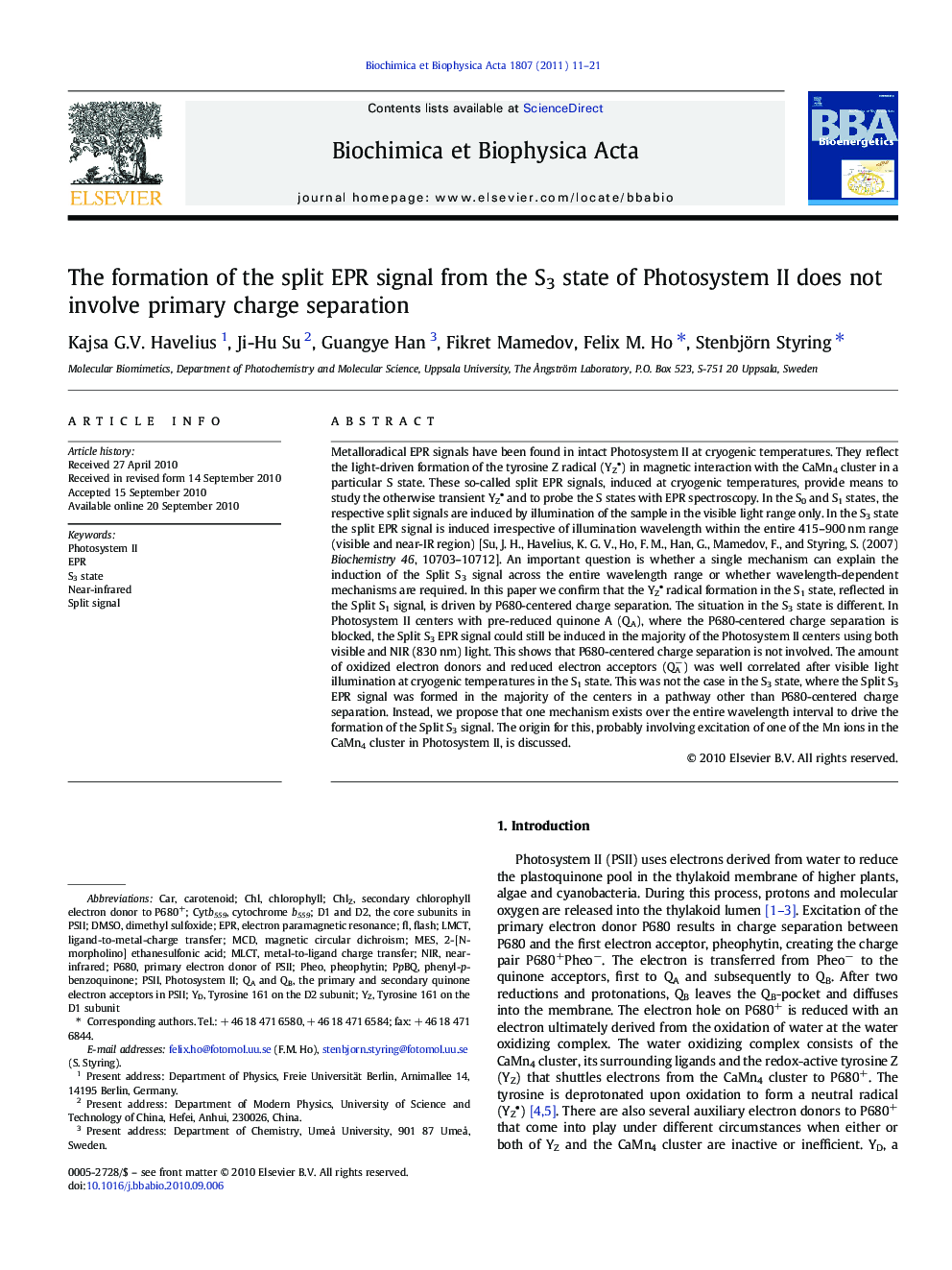| کد مقاله | کد نشریه | سال انتشار | مقاله انگلیسی | نسخه تمام متن |
|---|---|---|---|---|
| 1942735 | 1052626 | 2011 | 11 صفحه PDF | دانلود رایگان |

Metalloradical EPR signals have been found in intact Photosystem II at cryogenic temperatures. They reflect the light-driven formation of the tyrosine Z radical (YZ) in magnetic interaction with the CaMn4 cluster in a particular S state. These so-called split EPR signals, induced at cryogenic temperatures, provide means to study the otherwise transient YZ and to probe the S states with EPR spectroscopy. In the S0 and S1 states, the respective split signals are induced by illumination of the sample in the visible light range only. In the S3 state the split EPR signal is induced irrespective of illumination wavelength within the entire 415–900 nm range (visible and near-IR region) [Su, J. H., Havelius, K. G. V., Ho, F. M., Han, G., Mamedov, F., and Styring, S. (2007) Biochemistry 46, 10703–10712]. An important question is whether a single mechanism can explain the induction of the Split S3 signal across the entire wavelength range or whether wavelength-dependent mechanisms are required. In this paper we confirm that the YZ radical formation in the S1 state, reflected in the Split S1 signal, is driven by P680-centered charge separation. The situation in the S3 state is different. In Photosystem II centers with pre-reduced quinone A (QA), where the P680-centered charge separation is blocked, the Split S3 EPR signal could still be induced in the majority of the Photosystem II centers using both visible and NIR (830 nm) light. This shows that P680-centered charge separation is not involved. The amount of oxidized electron donors and reduced electron acceptors (QA−) was well correlated after visible light illumination at cryogenic temperatures in the S1 state. This was not the case in the S3 state, where the Split S3 EPR signal was formed in the majority of the centers in a pathway other than P680-centered charge separation. Instead, we propose that one mechanism exists over the entire wavelength interval to drive the formation of the Split S3 signal. The origin for this, probably involving excitation of one of the Mn ions in the CaMn4 cluster in Photosystem II, is discussed.
Research Highlights
► Split S3 signal formation in PSII at 5 K is not driven by P680-centered primary charge separation.
► A Mn-centered mechanism for YZ oxidation operates for both visible and NIR light illuminations in Split S3 signal induction.
► QA− reduction due to P680-centered charge separation can be fully accounted for by donation by secondary donors Chl/Car/Cytb559.
► Apart from Mn(III), the involvement of Mn(IV) ions in the excitation of the CaMn4 cluster is also a possibility.
Journal: Biochimica et Biophysica Acta (BBA) - Bioenergetics - Volume 1807, Issue 1, January 2011, Pages 11–21